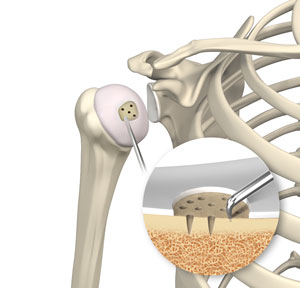
What is Shoulder Preservation Surgery?
Shoulder preservation surgery is any surgical procedure that is aimed at preserving the structure and function of the shoulder. It may be a good option when non-surgical treatments fail to relieve shoulder symptoms as it is less invasive than shoulder joint replacement surgery.
Indications of Shoulder Preservation Surgery
Shoulder preservation surgery may be recommended for the following conditions:
- Rotator cuff tears
- Shoulder dislocation
- Mild-to-moderate arthritis
- Mild-to-moderate degenerative joint conditions
Preparation for Shoulder Preservation Surgery
Specific instructions will be provided by your surgeon. In general, you should:
- Stop smoking as it can slow down the healing process.
- Inform your surgeon about any health conditions or allergies as well as your regular medications as some medications may need to be temporarily stopped before surgery.
- Avoid eating 8-12 hours prior to the surgery.
Shoulder Preservation Procedures
Most joint preservation surgeries can be performed using minimally invasive arthroscopic techniques. About 2-3 keyhole incisions are made on the skin through which a small camera and special arthroscopic instruments are inserted into the joint to repair the injured tissues. Some of the procedures that may be done include:
- Debridement with capsular release: This is used for the treatment of mild arthritis in the glenohumeral joint and usually involves the removal of loose pieces of cartilage. The inflamed joint lining, responsible for pain, is removed. This procedure is best suited for patients experiencing mechanical catching in the shoulder along with associated stiffness in the presence of mild arthritis.
- Microfracture: This is a surgical procedure that relies on the various healing elements in the blood to generate new cartilage-like tissues in cartilage deficient areas. The procedure involves surgically making small holes in the bone so that the blood flows to the areas with cartilage loss through these holes.
Risks and Complications of Shoulder Preservation Surgery
Shoulder preservation surgery is a safe, minimally invasive procedure; however, there is a minimal risk of bleeding, infection, delayed healing, and failure to heal after surgery.
Post-Operative Recovery after Shoulder Preservation Surgery
After joint preservation surgery, patients can expect to wear a sling and follow a physical therapy program that will help restore shoulder function. Physical therapy is important following surgery to help maximize the shoulder range of motion and strength. It may take about 6 months for their turn of full shoulder function.
Benefits of Shoulder Preservation Surgery
The benefits of shoulder preservation surgery include:
- Eliminates or reduces joint pain
- Improves or restores joint function
- Less invasive than total joint replacement surgery
- Delays or avoids joint replacement surgery




